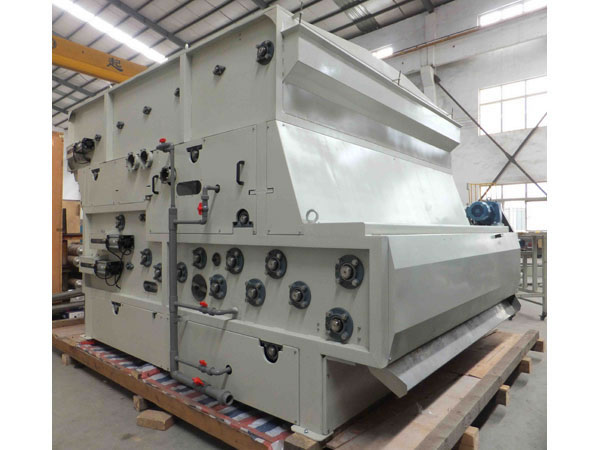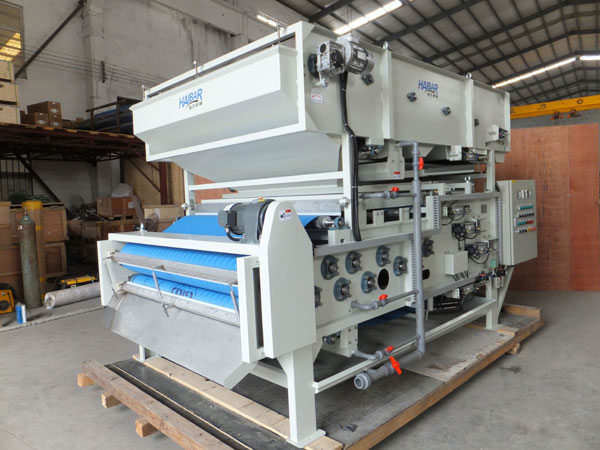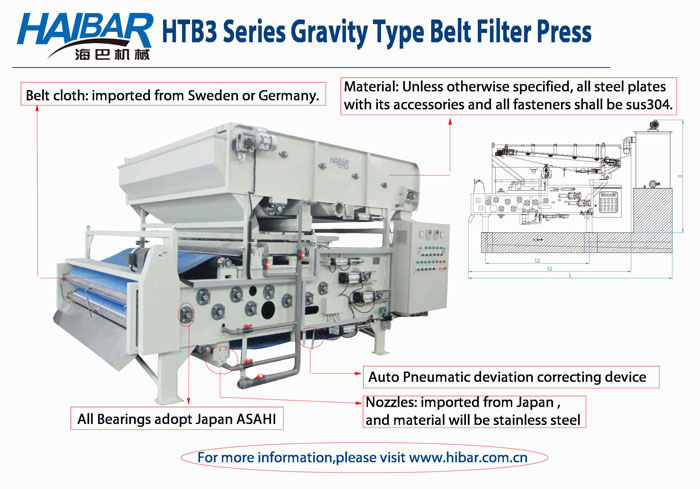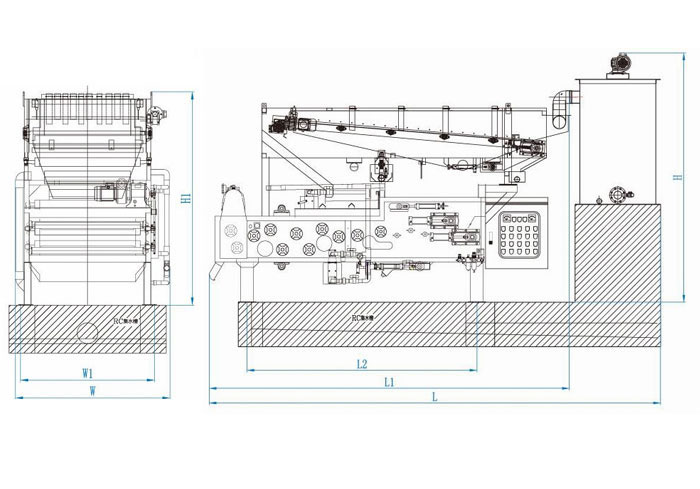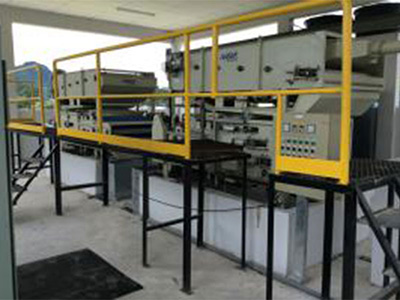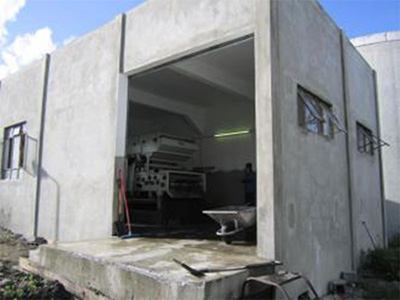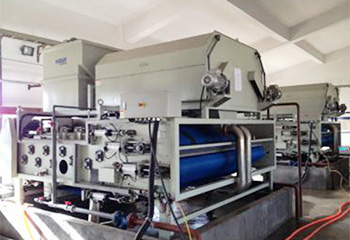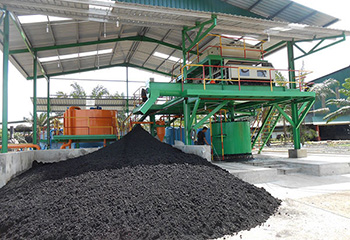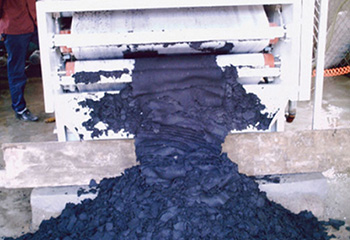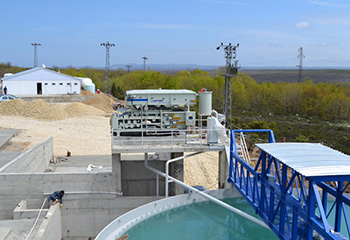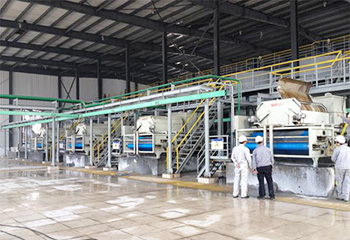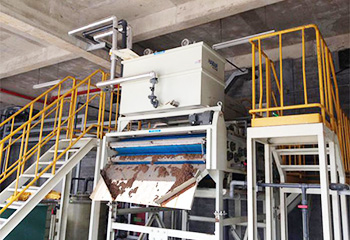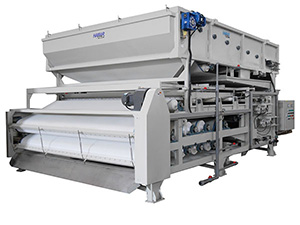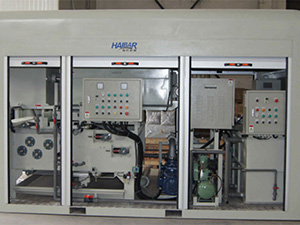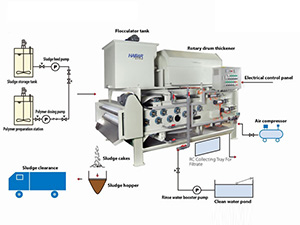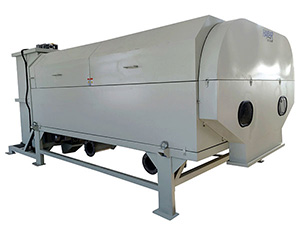HTB3 Industrial Filter Press for Sludge Thickening and Dewatering (Gravity Belt Type)
Widely used in a variety of industries, the HTB3 belt filter press combines the thickening and dewatering processes into an integrated machine for sludge and wastewater treatment.
HAIBAR's belt filter presses are 100% designed and manufactured in house, and feature a compact structure in order to treat different types and capacities of sludge and wastewater. Our products are well known throughout the industry for their high efficiency, low energy consumption, low polymer consumption, cost saving performance and long service life.
An HTB3 series belt filter press is a standard belt filter press, featuring a gravity belt thickening technology.
- Integrated gravity belt thickening and dewatering treatment process
- Wide range of normal applications
- The best performance is found when the inlet consistency is 0.4-1.5%.
- Installation is easy due to the compact structure and normal size.
- Automatic, continuous, simple, stable and safe operation
- Environmentally friendly operation is achieved due to the low energy consumption and low noise levels.
- Easy maintenance ensures a long term operation.
- The patented flocculation system reduces the polymer consumption.
- 7 to 9 segmented press rollers support different treatment capacities with the best treatment effect.
- The pneumatic adjustable tension achieves an ideal effect in full compliance with the treatment process.
- A galvanized steel rack can be customized when the belt width reaches more than 1500mm.
- Pneumatic Tensioning Device
The pneumatic tensioning device can work automatically and continuously. Different from the spring tensioning tool, our device allows the tension to be adjusted on basis of the specific sludge thickening process, so as to achieve an ideal treatment effect. - Roller Press with 7-9 Segments
The adoption of multiple press rollers and rational roller layout helps maximize the processing capacity, treatment effect, and the solids content in sludge cake. - Raw Materials
This series belt filter press is made from SUS304 stainless steel. Alternatively, it can be formed by SUS316 stainless steel as per customer requirements. - Raw Materials
This series belt filter press is made from SUS304 stainless steel. Alternatively, it can be formed by SUS316 stainless steel as per customer requirements. - Customizable Rack
We can customize the galvanized steel rack upon request, as long as the belt is over 1,500mm wide. - Low Consumption
As a kind of mechanical dewatering equipment, our product can lower the onsite operation cost, due to low dosage and low energy consumption. - Automatic and Continuous Running Process
- Simple Operation and Maintenance
Easy use and maintenance provides a low requirement for operators, and also helps customers save the human resource cost. - Superb Disposal Effect
The HTB3 series belt filter press is adaptable to various concentrations of sludge. It can achieve a satisfactory disposal effect, even if the sludge concentration is only 0.4%.
| Model | HTB3-750L | HTB3-1000L | HTB3-1250L | HTB3-1500L | HTB3-1750 | HTB3-2000 | HTB3-2500 | |
| Belt Width (mm) | 750 | 1000 | 1250 | 1500 | 1750 | 2000 | 2500 | |
| Treating Capacity (m3/hr) | 8.8~18 | 11.8~25 | 16.5~32 | 19~40 | 23~50 | 29~60 | 35~81 | |
| Dried Sludge (kg/hr) | 42~146 | 60~195 | 84~270 | 100~310 | 120~380 | 140~520 | 165~670 | |
| Water Content Rate (%) | 65~84 | |||||||
| Max. Pneumatic Pressure (bar) | 6.5 | |||||||
| Min. Rinse Water Pressure (bar) | 4 | |||||||
| Power Consumption (kW) | 1 | 1 | 1.15 | 1.5 | 1.9 | 2.1 | 3 | |
| Dimensions Reference (mm) | Length | 3880 | 3980 | 4430 | 4430 | 4730 | 4730 | 5030 |
| Width | 1480 | 1680 | 1930 | 2150 | 2335 | 2595 | 3145 | |
| Height | 2400 | 2400 | 2600 | 2600 | 2800 | 2900 | 2900 | |
| Reference Weight (kg) | 1600 | 1830 | 2050 | 2380 | 2800 | 4300 | 5650 | |
Precautions
1. Our company reserves the right to change the above-mentioned specifications of our gravity belt thickening-dewatering belt filter press.
2. The dried sludge, treating capacity, and water content rate are decided by the varieties of sludge.


